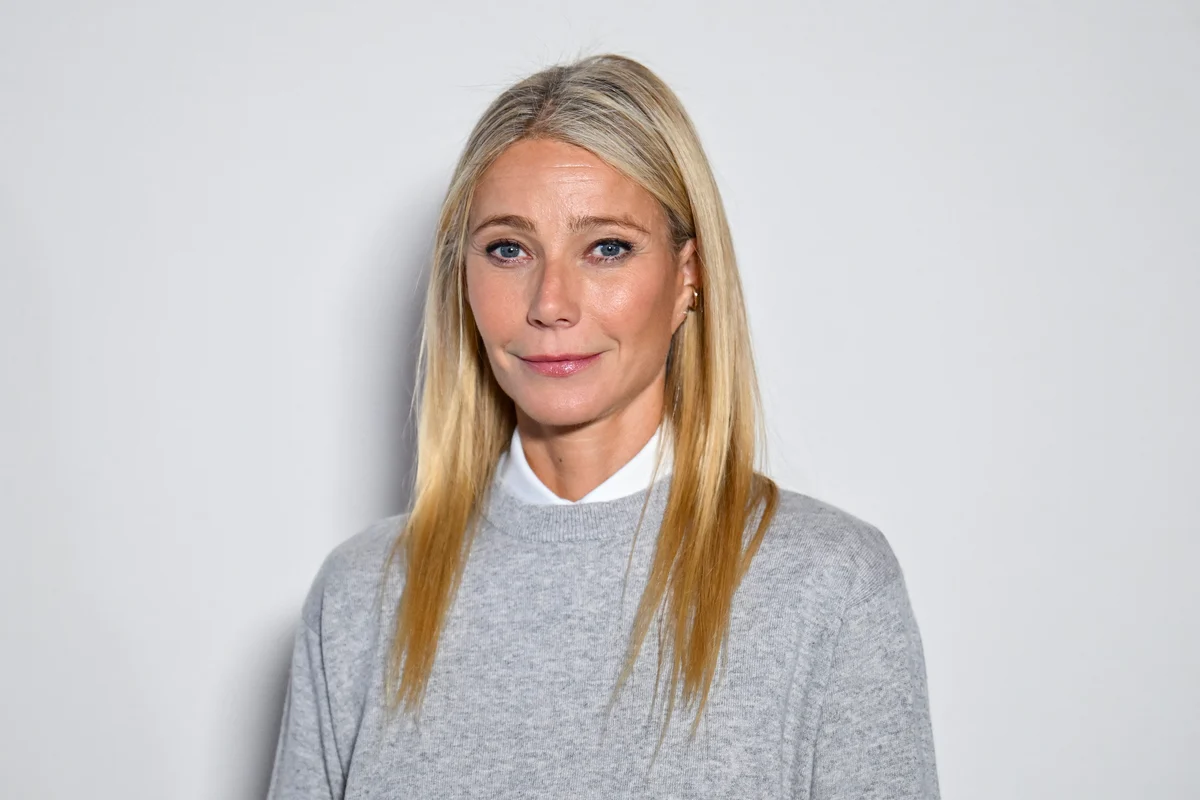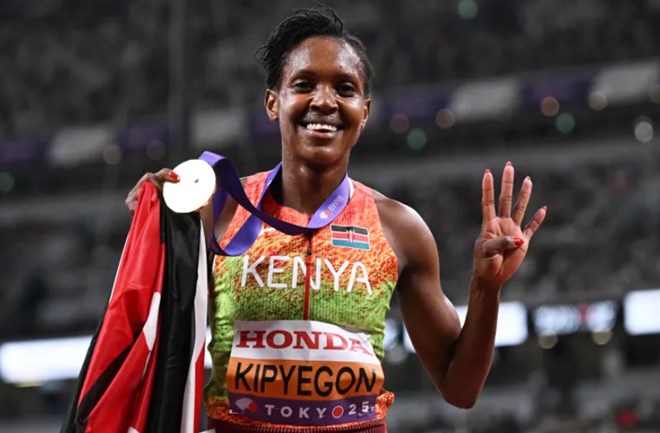Gwyn, Skims, The Row: The celebrity fashion brands that have thrived (and the ones that haven’t)
By Maddy Mussen
Copyright standard

After more than 100 launches over the past decade, celebrities seem to have finally accepted that the beauty market is overcrowded. Now, they’re pivoting towards apparel.
During New York Fashion Week, Gwyneth Paltrow debuted her clothing label Gwyn, a subsection of her lifestyle brand Goop. The capsule collection of 36 pieces, with price points from $300 to $2,000, goes live on goop.com from September 21.
But wait — doesn’t GP already have a clothing line? That she does. Goop’s fashion subsidiary, G. Label, was launched in 2016, but Paltrow has decided to “phase out” G. Label in favour of Gwyn, which the 52-year-old founder says is “a little more international, a little less California.”
Paltrow’s launch event on Monday invited “a handful of tastemakers” to a private viewing of the collection in Tribeca, New York. The viewing featured carved-out courgettes displaying the Gwyn logo, plates of Vogue cigarettes, and a handful of wooden clothes rails lined with navy, grey and cream.
The second coming of Goop apparel is part of Paltrow’s clear pivot towards the fashion market. She made this intention clear last year when she hired creative director Sofía Menassé, whose curriculum vitae includes Maison Margiela and The Row.
But if the deluge of celebrity “wellness” lines has taught us anything, it’s that not every A-lister has what it takes to launch a successful lifestyle brand. And if the middling brand identity of G. Label has shown us anything, it’s that even the celebrities who can make it in lifestyle can’t make it in fashion.
So, which celebrity fashion brands are thriving, and which have hit a snag? We outline a selection below.
If the success of Rihanna’s Fenty Beauty is what drew so many celebrities to start their own beauty brands, then Mary-Kate and Ashley Olsen’s The Row is surely the fashion equivalent. Founded in 2006, the logoless label took some time to take off, but is now widely regarded as the apex predator of the “quiet luxury” market.
The Row is frequently worn by fellow A-list celebrities, including Zoë Kravitz, Rosie Huntington-Whiteley, Gigi Hadid, Kendall Jenner and Jennifer Lawrence. It was valued at $1 billion in late 2024 and made its official debut on The Lyst Index Top 20 ranking of fashion’s hottest brands. Its highest ranking to date came in Q2 2025, when it placed 6th. Back in 2009, The Row’s production manager Joe Karban told The New York Times: “Everything Mary-Kate and Ashley do turns to gold.” At the time, it seemed laughable. Now, he sounds like the Oracle.
Much was made of Kylie Jenner’s entry into the fashion market when she announced Khy in November 2023. But Khy failed to take off with the same force as Jenner’s other ventures, Kylie Cosmetics and Kylie Skin. In a recent article from Vogue Business, Khy did not disclose sales figures, though it initially claimed to have surpassed $1 million in sales within its first hour online.
It insists its most successful collections are its collaborations, which isn’t necessarily a bad thing: Rihanna’s various forays into fashion have been largely via collaborations with her Fenty brand, with much success, so watch this space.
It’s no secret that Kim Kardashian’s shapewear brand, Skims, is hugely successful. It earned a $4 billion valuation in summer 2023, as reported by The New York Times. After being launched in 2019, Skims’ popularity grew thanks to a slew of viral moments (remember the erect nipple bra?), editorialised campaigns (often shot by fashion-world darling Nadia Lee Cohen) and high-profile brand ambassador announcements (including Jude Bellingham, Sabrina Carpenter, Rosé and Charli xcx, to name but a few).
In June 2025, the Business of Fashion reported that Skims is on track to open 16 new locations in the US. “We’re trying to build the Apple stores of apparel,” Skims chief executive Jens Grede told the publication.
Scrappy loungewear brand Drew House was launched by Justin Bieber and his friend Ryan Good in 2019, just before demand for comfortable clothing was about to boom due to the Covid pandemic. The brand seemed like a natural fit: Bieber is rarely seen out of his comfy-casual clothing — something which has since become a meme, point of concern, and bone of contention, especially when his wife Hailey Bieber is dressed to the nines.
Yet, after an apparent period of success in the early 2020s, Bieber publicly severed ties with the company in 2025, telling Instagram followers “Drew House doesn’t represent me or my family or life,” and advised fans to stop buying from the brand if they were “rocking with me, the human Justin Bieber.” With Bieber’s association forming much of Drew House’s appeal, it’s likely his comments against the brand will have taken a toll.
Our VB has worked for years to establish herself as Victoria Beckham, the fashion designer, over Victoria Beckham, the former Spice Girl — or more patronisingly, Victoria Beckham, wife of David. And in 2024, it was reported that her eponymous fashion label had officially become profitable, 17 years after its launch. The business showed a profit of £200,000 in 2022, while her luxury label has also received more than £30 million in support from other aspects of the Beckham business portfolio.
“To be able to say we’re profitable is something I’m so proud of,” Beckham said at the time, “because it’s not an easy industry, and it’s getting harder and harder. To be able to say that I’m selling clothes right now, when you look at how luxury is struggling…” The Times reported last month that one of Beckham’s Satin Kajal eyeliners sells every 30 seconds, and her clothes have been worn by the likes of Meghan Markle, the Princess of Wales, Lady Gaga and Selena Gomez.
Brad Pitt and cashmere might not sound like the most natural combination, but they’re a closer knit than you’d think. In 2019, Pitt co-founded the company God’s True Cashmere with his friend Sat Hari, a holistic healer and jewellery designer. God’s True Cashmere has been a quiet success, with WWD reporting a “surge” in sales in 2023. In 2025, a spokesperson claimed the company was seeing eight-figure earnings and exponential year-on-year growth.
However, it hasn’t all been so easy. The God’s True brand recently decided to expand into linen (”We picked linen because its vibration is very high and it has healing properties,” Hari has said) before quickly realising it had bitten off more than it could chew. According to Vogue, the God’s True Linen orders started flooding in, but the team couldn’t fulfil them. This was partially due to forces of nature (climate change, wildfires) and tariffs, but also due to Hari and Pitt being “perfectionists”. They postponed the hard retail launch, which they called “humbling”, and will be reattempting it next year.



